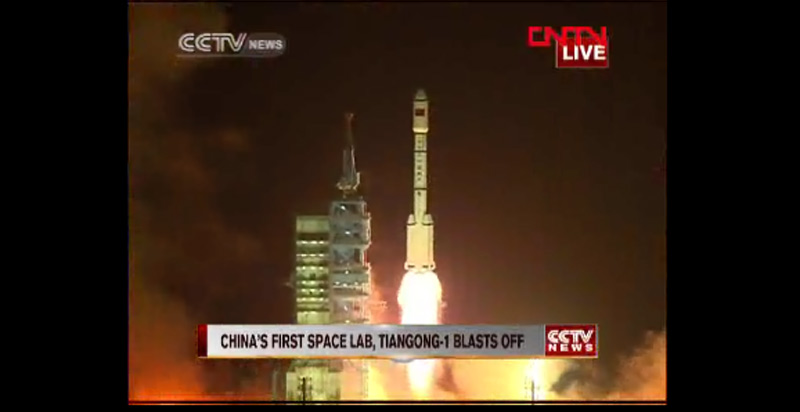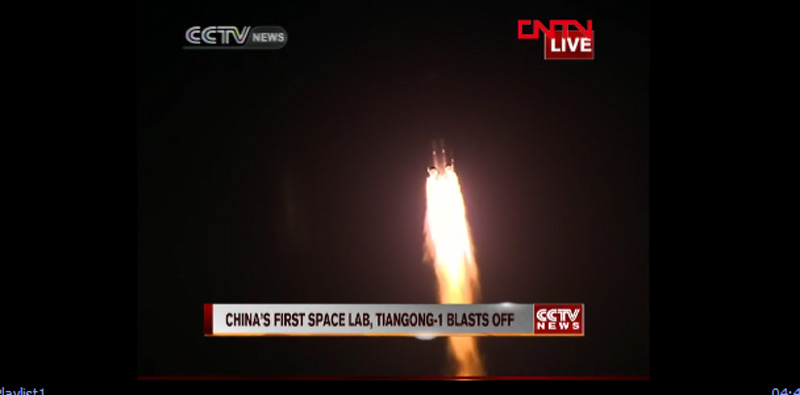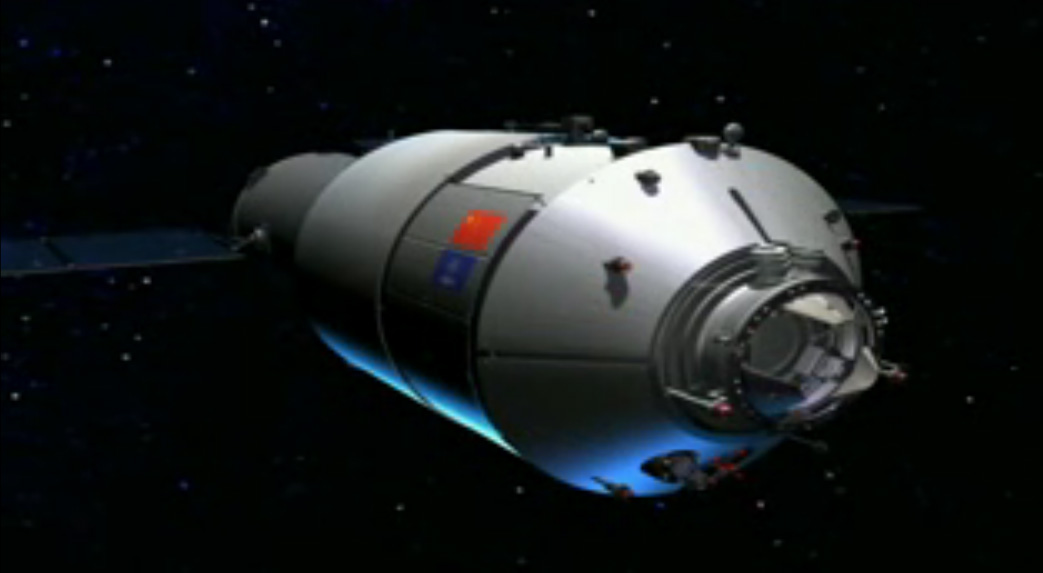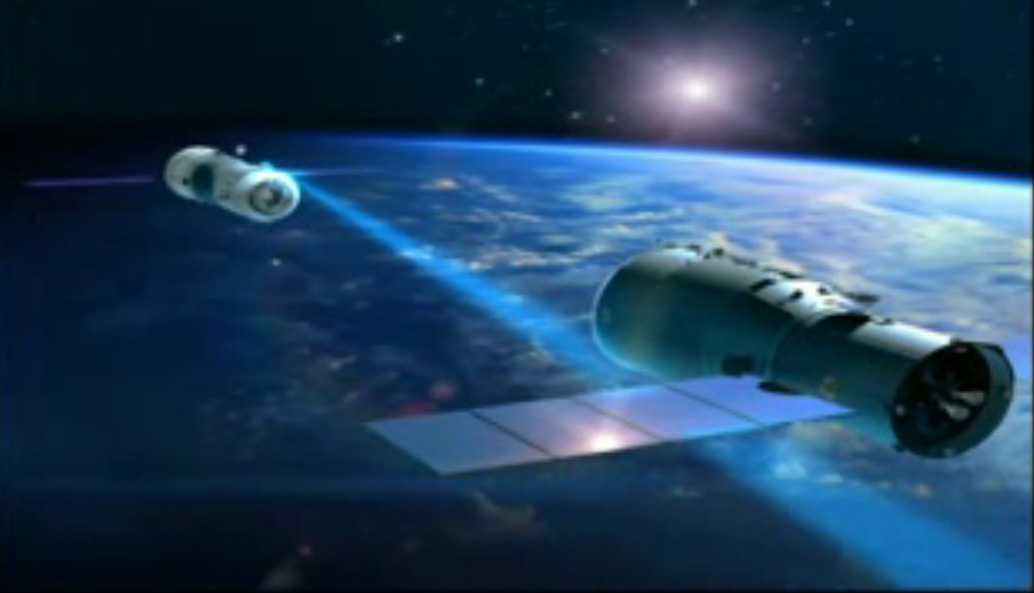China Launches 1st Space Lab Module Into Orbit for Docking Tests

China successfully launched its first space lab module into orbit in an impressive nighttime display today (Sept. 29).
The unmanned Tiangong 1 module lifted off on a Chinese Long March 2F rocket at 9:16 p.m. Local Time (1316 GMT/9:16 a.m. EDT) from the Jiuquan Satellite Launch Center in northwest China. The spacecraft launched just days before China's National Day holiday, which occurs Saturday (Oct. 1).

"It’s absolutely an accomplishment," said Victoria Samson of the Secure World Foundation, an organization dedicated to the peaceful use of outer space. However, Samson, director of the foundation's Washington office, added that the launch of Tiangong 1 represents an achievement that other countries, including the United States, managed decades ago. [Photos: China Launches First Space Lab, Tiangong 1]
"They're doing their version of Spacelab, but that's something we did back in the '70s," she said.
The Tiangong 1 module, which is expected to remain in orbit for two years, is considered an important steppingstone in the country's effort to construct its own crewed space station. The prototype space lab measures 34 feet (10.4 meters) long and 11 feet (3.35 meters) wide and weighed about 8.5 metric tons on Earth.

"The main tasks of [the] Tiangong 1 spaceflight include: to provide a target vehicle for space rendezvous and docking experiment; to primarily establish a manned space test platform capable of long-term unmanned operation in space with temporary human attendance, and thus accumulate experiences for the development of the space station; to carry out space science experiments, space medical experiments and space technology experiments," China's Manned Space Engineering office spokeswoman Wu Ping told reporters yesterday (Sept. 28) at the launch site, according to a translation provided by the office. [Gallery: Tiangong 1, China's First Space Laboratory]
Tiangong 1, which translates to "Heavenly Palace," will test docking technology in conjunction with three spacecraft — Shenzhou 8, Shenzhou 9 and Shenzhou 10 — that will be launched at a later date, according to state media reports. These planned robotic maneuvers will be China's first dockings in orbit.
Get the Space.com Newsletter
Breaking space news, the latest updates on rocket launches, skywatching events and more!
The Shenzhou 8 spacecraft will launch in early November, with Shenzhou 9 to follow in 2012. Both flights will be unmanned docking trials. The Shenzhou 10 mission, also in 2012, may carry a crew to Tiangong 1, a team that could also include China's first female astronaut, Chinese space officials said.

Tiangong 1 is also carrying medical and engineering experiments into space, according to state media. It is packed with 300 flags from the International Astronautical Federation, to commemorate the mission.
While Chinese space officials have indicated that the launch of Shenzhou 8 could occur in early November, but it's possible the unmanned mission could lift off sooner, said Dean Cheng, a research fellow on Chinese political and security affairs at the Heritage Foundation, a conservative public policy think tank.
"The Chinese have put up launches within days of each other," Cheng told SPACE.com. "But we don’t have a good indication as to exactly when it will go up."
The launch of Tiangong 1 is considered a milestone for China and its burgeoning space program. It is particularly important for China's space program after last month's failure of a Long March 2C rocket, which malfunctioned shortly after liftoff and did not reach orbit. [Related: US & China: Space Race or Cosmic Cooperation?]
"It’s probably going to be a big deal in China, with lots of news coverage," Cheng said. "You’d probably have to make an effort to avoid it. Once this is launched, you are going to have just a huge amount of hoopla from the state-run media to remind the people of what is going on."
An investigation into the Long March 2C malfunction delayed plans to launch Tiangong 1. Today's successful launch using a similar booster, the Long March 2F, marks an important step toward fulfilling the country's goal of building a 60-ton manned space station by the year 2020. [Infographic: How China's First Space Station Will Work]
China is only the third nation, after the United States and Russia, to independently launch humans into orbit. China's first manned mission, Shenzhou 5, was piloted by Yang Liwei on Oct. 15, 2003. Two more manned missions followed, in 2005 and 2008.
You can follow SPACE.com staff writer Denise Chow on Twitter @denisechow. SPACE.com senior writer Clara Moskowitz (@ClaraMoskowitz) contributed to this report. Follow SPACE.com for the latest in space science and exploration news on Twitter @Spacedotcom and on Facebook.
Join our Space Forums to keep talking space on the latest missions, night sky and more! And if you have a news tip, correction or comment, let us know at: community@space.com.

Denise Chow is a former Space.com staff writer who then worked as assistant managing editor at Live Science before moving to NBC News as a science reporter, where she focuses on general science and climate change. She spent two years with Space.com, writing about rocket launches and covering NASA's final three space shuttle missions, before joining the Live Science team in 2013. A Canadian transplant, Denise has a bachelor's degree from the University of Toronto, and a master's degree in journalism from New York University. At NBC News, Denise covers general science and climate change.









